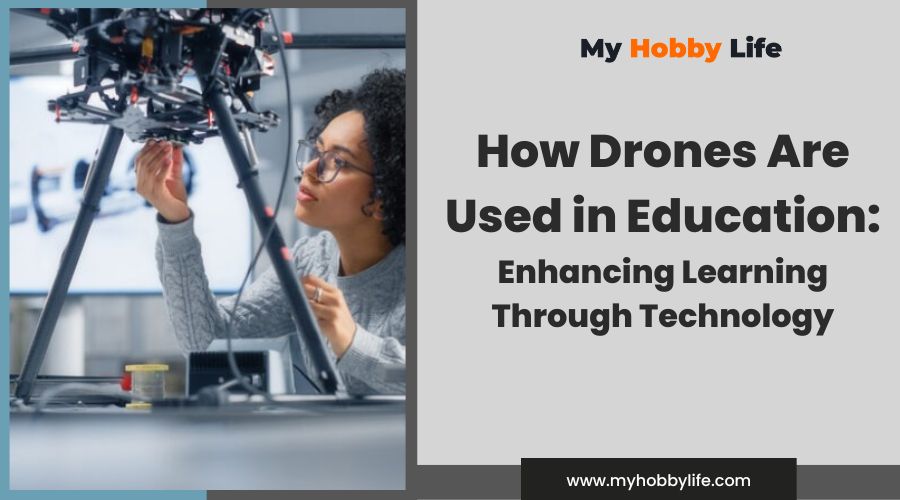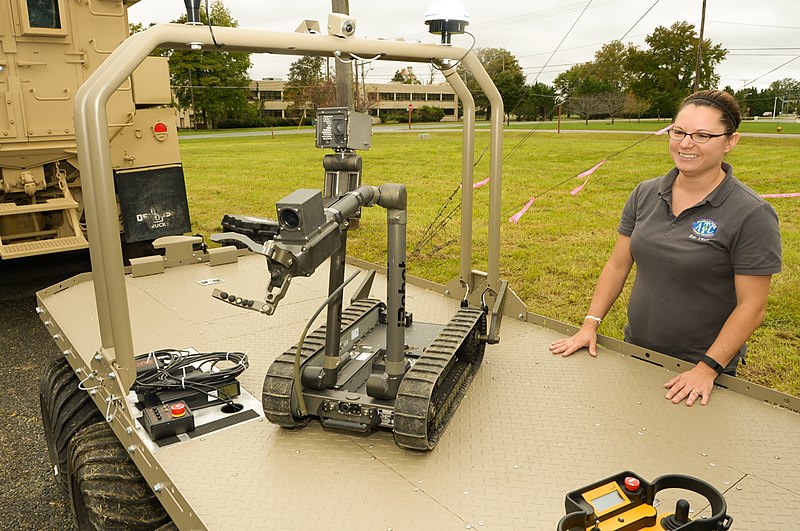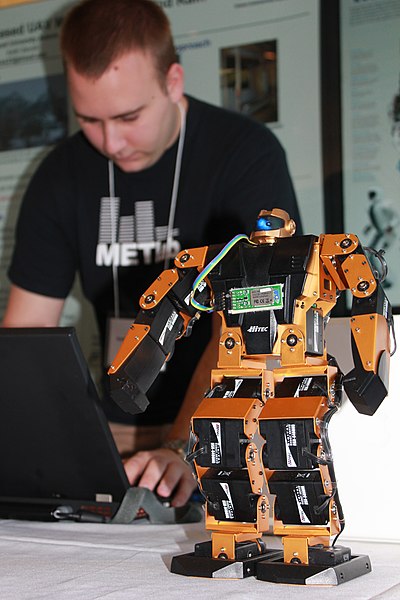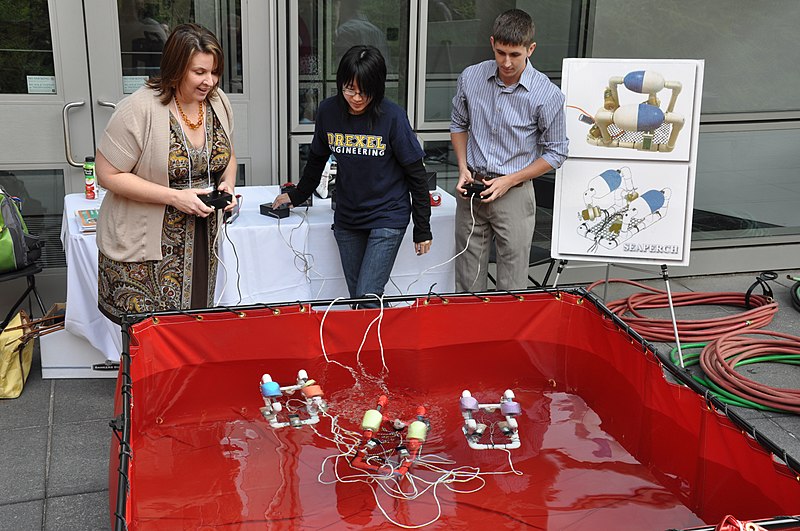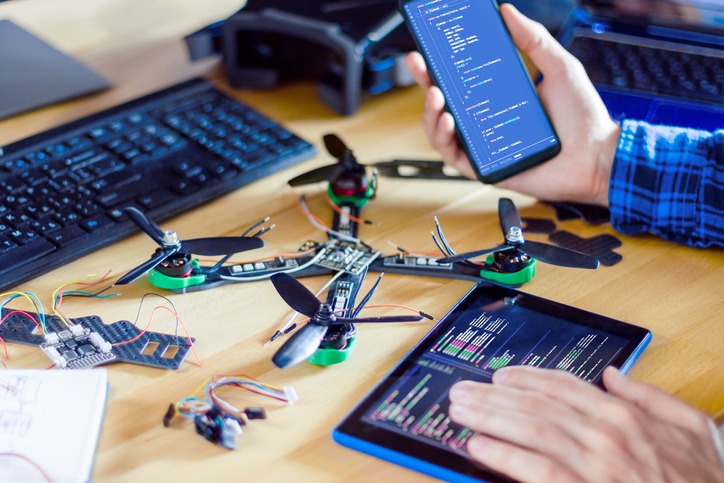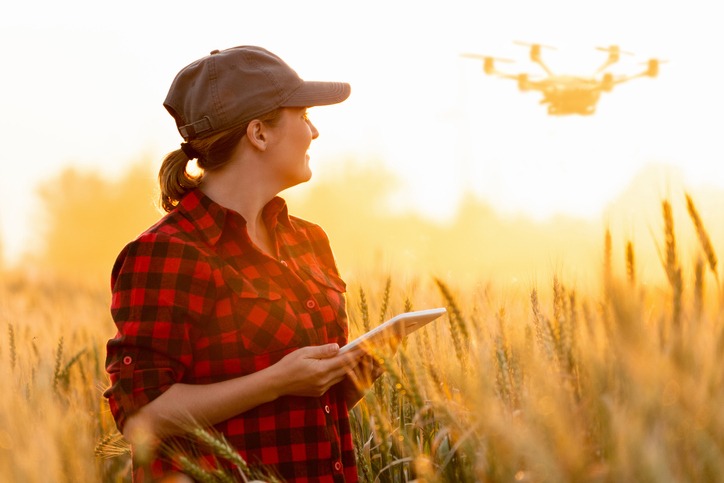Drones, once primarily the domain of military and hobbyist applications, have steadily been gaining ground in educational settings around the world. In classrooms from elementary levels to university research labs, drones offer a hands-on platform for educators and students alike to explore a range of subjects. They represent a convergence of technology, engineering, and creativity that can enhance learning in fields as diverse as computer science, geography, and the arts.
In education, drones serve not just as teaching aids but as catalysts that spur innovation and curiosity among students. Through strategic partnerships and thoughtful integration into the curriculum, educators are utilizing drones to teach programming, to give students a novel perspective in filmography, or to enrich the study of environmental sciences. For the students, the tangible experience of controlling and understanding drones can open up new vistas of learning and potential career paths in the burgeoning drone industry.
Moreover, the Federal Aviation Administration underscores the importance of understanding the guidelines and safety protocols essential to operating drones within the educational ambit. By adhering to these regulations, educational institutions ensure that they harness the full potential of drones as a transformative educational tool, while instilling in students a strong sense of responsibility and safety awareness. This holistic approach to the use of drones in education not only facilitates immersive learning experiences but also prepares students for the realities of a future where drones play an increasingly significant role.
The Role of Drones in Educational Curricula
Educational institutions are incorporating drones into their curricula to provide students with an interactive and comprehensive way to learn various subjects. In STEM curricula, drones become tangible tools that can aid in teaching principles of technology, engineering, and mathematics. Through programming and operating drones, students apply math and science concepts in practical scenarios, fostering better engagement and comprehension.
Teachers use drones as an effective means to illuminate concepts in environmental studies. For instance, they enable students to collect data and observe ecosystems from unique perspectives. In geography classes, drone technology assists in map-making and studying topography. For history and social studies, aerial views offered by drones can reveal archaeological sites and stimulate discussions about human geography.
The integration of drones in physical education introduces an innovative dimension where students not only learn about the mechanics and physics of flight but also engage in outdoor activities with drone navigation challenges. In the arts, drones enable students to explore aerial cinematography and photography, enhancing their creative expression.
As a tool in language classes, drones can be part of storytelling projects where students narrate the journey of a drone, combining written skills with visual footage. Drones have also been found useful in subjects like mathematics where they aid in visualizing mathematical models and measuring distances through drone-captured imagery.
Schools are adapting their facilities to safely accommodate drones in the classroom, ensuring compliance with regulations and fostering a conducive atmosphere for students to learn the responsibilities associated with operating this technology.
In summary, drones serve as versatile teaching aids across various disciplines, enriching the educational experience and preparing students for a future where technology plays a central role.
Incorporating Drone Technology in STEM Education
In STEM education, the inclusion of drone technology furthers the application of science, technology, engineering, and mathematics. Students engage in problem solving, critical thinking, and hands-on learning through build and design processes. Here, the scope of learning extends from concepts in physics to software programming.
Drone Design and Engineering
Incorporating drone technology within the engineering curriculum allows students to directly apply scientific principles to the build and design of drones. They explore aerodynamics, material science, and the mechanical systems that allow drones to operate. Building a drone from scratch, students grasp engineering constraints and become familiar with the product development lifecycle, including prototyping and testing.
Programming and Coding
Drones are sophisticated machines that require software to manage their operations. Through programming, students learn to code the software that controls drone flight patterns, stability, and navigation. This aspect of education involves writing algorithms, working with drones’ embedded systems, and understanding the interface between hardware and software. This practice strengthens students’ coding skills and introduces them to concepts such as automation and robotics.
Mathematics and Physics Applications
The physics behind drone flight—principles like lift, thrust, drag, and weight—provides a practical framework for math and physics education. Students apply mathematical calculations to predict movements, optimize designs, and solve complex problems related to flight dynamics. They engage in real-world applications of trigonometry, calculus, and physics while learning how these disciplines integrate within technology and engineering.
Practical Skills and Workforce Preparation
In the context of education, drones serve as both a teaching tool and a platform for developing practical skills relevant to the workforce. Students gain hands-on experience with drone operation and navigate the intricacies of FAA regulations, ultimately opening doors to varied career opportunities in the drone industry.
Drone Operation and Safety
Students are taught best practices for flying drones, encompassing the technical aspects of operation and critical safety protocols. Curriculums often include:
- Pre-flight checks and maintenance routines
- Maneuvering techniques and flight control
- Emergency procedures and risk mitigation
- Data capture and mission planning
This education aims to emphasize responsible drone usage and to instill a culture of safety in future pilots.
FAA Regulations and Certification
Understanding and adherence to FAA regulations are crucial for anyone aspiring to enter the drone industry. Education covers:
- Part 107 of the FAA regulations, detailing commercial drone use
- The process for obtaining FAA certification, crucial for commercial pilots
- Legal restrictions and airspace classification
Students are guided through the process of FAA certification, ensuring they are legally qualified to operate drones for commercial purposes.
Career Opportunities Related to Drones
The drone industry presents diverse career opportunities for those with the right training and qualifications. Opportunities include:
- Drone pilot and aerial photographer/videographer
- Drone technician and engineer
- Roles in public safety, agriculture, and infrastructure inspection
With proper training and certification, individuals can pursue careers that meld their technical skills with an ever-growing demand for drone expertise.
Drones in Various Academic Disciplines
Educational institutions are increasingly incorporating drones to enhance experiential learning across disciplines. These devices offer practical applications from elementary science classes to university-level research, adapting to various grade levels and curricular demands.
Science and Environmental Studies
Drones have become invaluable in science and environmental studies, allowing students to collect data on ecosystems and monitor environmental changes. These unmanned aerial vehicles (UAVs) enable the observation of natural habitats without disturbance, fostering a hands-on approach to learning about conservation and wildlife biology. Students can track changes over time and understand the dynamics of different environments from an aerial perspective.
- Example applications:
- Ecosystem mapping: plotting out vegetation and analyzing biodiversity.
- Wildlife monitoring: observing animal behavior and migration patterns.
Arts and Media
In arts and media education, drones are revolutionizing the way students engage with content creation. By facilitating aerial photography and videography, students explore new angles and perspectives, which are crucial in filmmaking and journalism. Drones help students understand storytelling from a different vantage point, inspiring creative approaches to traditional narratives.
- Use cases include:
- Cinematography: capturing sweeping landscapes for films.
- Journalistic reporting: providing unique viewpoints for stories.
Physical Education and Sports
Physical education and sports departments utilize drones to record athletic events, providing real-time feedback for performance improvement. Coaches and students can analyze playbacks to discuss tactics and form, applying this knowledge to develop training routines and strategic game plans.
- Sports enhancements:
- Game analysis: studying player movements and team formations.
- Technique refinement: assessing individual sports techniques for training purposes.
Language Arts and Social Studies
Drones support various aspects of language arts and social studies through the facilitation of speaking and writing exercises. They offer new contexts for historical exploration by surveying archaeological sites, which then serve as prompts for engaging in written reflections or oral presentations. Additionally, these aerial tools provide a platform for analyzing societal interactions and community evolution from a literal higher ground.
- Academic integrations:
- Historical surveys: examining the development of regions over time.
- Community studies: documenting and discussing urban planning and societal changes.
Multidisciplinary Approaches to Drone Education
Drones in educational settings serve as an excellent tool for fostering a multidisciplinary learning environment. Through the utilization of drones, students engage in hands-on applications that integrate various branches of science, technology, engineering, and mathematics (STEM). This interdisciplinary approach encourages students to apply their knowledge from multiple domains creatively while collaborating with peers, thereby enhancing both soft skills and teamwork.
In the classroom, drone-based projects often require learners to understand and use concepts from physics for flight dynamics, mathematics for navigation, and computer programming for drone control. Additionally, elements of chemistry, electronics, and radio communication systems become relevant when students delve into the construction and functionality of drones. This holistic educational approach not only bolsters critical thinking but also allows students to become role models for peers, showcasing the application of theoretical knowledge in practical scenarios.
| Key Competencies in Drone Education | Description |
|---|---|
| Creativity | Designing innovative drone uses and solutions. |
| Teamwork | Collaborating on drone-based projects. |
| Soft Skills | Communicating and problem-solving effectively. |
| Critical Thinking | Analyzing and overcoming drone-related challenges. |
Educators employ inquiry-based and experiential learning approaches to enable students to explore and create connections between content knowledge across curriculums. This connected way of learning fosters a more in-depth understanding and retention of concepts as students see them applied in real-world contexts. Drones are thus not just tools for teaching but also powerful vehicles for inspiring a new wave of technologically adept individuals poised to navigate the challenges of the 21st century.
Technological Literacy and Equipment Handling
Educators integrate drones into curricula to enhance technological literacy and familiarize students with sophisticated equipment. This process begins with understanding the core technologies that propel drones, such as remote control systems and programming essentials. By actively using these technologies, students cultivate a practical skill set that includes operating intricate equipment and troubleshooting technical issues.
Drones also serve as an excellent tool to teach students about various sensors. These include gyroscopes, which allow drones to maintain balance and orientation, accelerometers for measuring speed fluctuations, and GPS for navigation. Being able to interpret data from these sensors gives students an edge in technology applications and data analysis, important components across STEM disciplines.
In addition to sensors, utilizing cameras mounted on drones exposes students to aerial photography and videography. This encourages them to understand and manipulate visual data, a skill with growing relevance in digital media and information technology fields.
Understanding aviation principles through hands-on drone operation helps students comprehend the complexities of aerodynamics and airspace regulations—a vital set of knowledge in the growing field of unmanned flight.
Lastly, the use of drones is tightly interwoven with the ability to use computers and networks effectively. From flight programming to data transmission, students learn to navigate and manage the digital aspect of drone technology.
Here’s a brief overview of skills students develop:
- Remote Control Operations: Maneuvering drones with precision.
- Programming: Writing and implementing flight paths and behaviors.
- Sensor Data Analysis: Interpreting input from GPS, gyroscopes, and more.
- Camera Use: Capturing and processing aerial images and video.
- Aviation Principles: Understanding the physics of flight and airspace regulation.
- Computer Proficiency: Managing software for drone control and data retrieval.
- Networking: Communicating between the drone and control systems.
Drone-Based Projects and Research Opportunities
Drones, known as unmanned aircraft, have found their place in educational landscapes, offering a multitude of research and project opportunities. Students can engage in programming these aircraft, tailoring flight paths and behaviors, which underscores the importance of precision and computational thinking in real-world applications.
Environmental Monitoring is a paramount area where students can utilize drones. By collecting data over large or inaccessible areas, they can analyze ecosystems, observe wildlife, and monitor environmental changes over time. This hands-on experience not only reinforces concepts in environmental sciences but also emboldens students to contribute to ongoing ecological research.
In the domain of Engineering and Robotics, drones offer practical applications for theoretical concepts. Students can design and build drone components, understanding the intricacies of aerodynamics and control systems. Crafting these unmanned aircraft provides an immersive learning experience that combines creativity with analytical skills.
Inspection and Surveillance Projects offer another avenue for educational drone use. Drones can be equipped with cameras and sensors to inspect structures such as bridges or historical monuments. These projects introduce students to the responsibilities and methodologies involved in maintaining societal infrastructure.
Through these applications, drones serve as a bridge between abstract concepts and tangible outcomes, fostering a learning environment where theoretical knowledge is applied in practical, innovative ways. Students gain not only a deeper understanding of the subject matter but also invaluable skills for their future careers.
Ethics, Privacy, and Legal Considerations
The integration of drones into educational settings raises important questions regarding individual privacy, ethical use, and legal compliance. It is vital to address these concerns to ensure drones benefit the educational experience without compromising personal rights or regulatory statutes.
Privacy and Ethical Issues
Privacy Concerns:
- Data Collection: Drones can capture extensive visual and audio recordings, potentially infringing on the privacy of individuals within their range.
- Security of Data: Ensuring the data collected is stored securely to prevent unauthorized access.
Ethical Considerations:
- Consent: It’s important that educational institutions obtain informed consent from all individuals who may be recorded or observed by drones used in educational contexts.
- Safety: Educators must prioritize the safety of their students and bystandaries during drone operations, avoiding any potential physical or psychological harm.
Legal Framework and Compliance
Regulations:
- FAA Rules: Educators must comply with the Federal Aviation Administration (FAA) regulations, which govern the operation of unmanned aerial systems (UAS) in the U.S. airspace, including altitude restrictions, no-fly zones, and pilot certifications.
- State and Local Laws: Besides FAA regulations, educators must be aware of additional state and local laws affecting drone usage.
Compliance:
- Policy Development: Schools and educational institutions should develop clear policies that align with legal standards and describe acceptable drone use within educational programs.
- Transparency: Educators should maintain transparency about drone usage by keeping parents, students, and staff informed about when and how drones are used in educational settings.
Expanding Horizons: Drones Beyond the Classroom
As drones increasingly depart from traditional educational settings, they pave the way for innovative applications across diverse industries and contribute to the forecasting of global trends.
Industry Applications
Drones have transitionally moved from an educational tool to a practical asset across various sectors. In agriculture, drones are utilized for monitoring crop health, aiding in viticulture by analyzing soil and vine conditions, and managing livestock. The construction industry employs drones for surveying land and ongoing project management, enhancing precision and safety.
In real estate, aerial photography and videography offer unique perspectives of properties, improving marketing efforts. Surveying work has been revolutionized, with drones providing faster and more accurate land assessments. The healthcare sector benefits from drones via the quick delivery of medical supplies to remote areas.
For journalism, drones offer access to otherwise inaccessible areas, providing first-hand footage of events. Archaeology has seen the advantage of drones in unearthing historical sites without intrusive methods. Emergency response teams use drones for assessing disaster zones and conducting search and rescue missions, significantly reducing risk and time.
In fields where stealth and security are paramount, the military leverages drones for reconnaissance, while law enforcement uses them for surveillance and monitoring.
Global Impact and Future Trends
Drones are not only transforming industries but are also playing a critical role in shaping future global trends. The increased accessibility of drone technology is leading to a democratization of aerial photography and videography, uplifting creative expressions in photography, filmmaking, and content creation.
The capability of drones in providing real-time data and analytics is fostering advancements in smart agriculture, urban planning, and environmental conservation. This trend is bolstered by ongoing improvements in sensor technologies, like gyroscopes and GPS.
As legislation evolves to keep pace with these innovations, drones will become more integrated into daily operations across sectors, predicting a future where their presence is as standard as the use of computers today.
Frequently Asked Questions
This section addresses common inquiries regarding the use of drones in educational contexts, from primary education to advanced degree programs.
What educational benefits do drones provide to students in degree programs?
Drones offer students in degree programs hands-on experience with cutting-edge technology, enhancing their understanding of diverse subjects like engineering, geospatial sciences, and computer programming.
In what ways are drones integrated into elementary education curriculums?
Elementary education curriculums use drones to teach basic principles of physics and mathematics, as well as to foster skills in problem-solving and critical thinking through interactive learning.
How are drones shaping the future prospects of the educational sector?
Drones are transforming the educational sector by providing unique perspectives for learning, facilitating outdoor educational activities, and by offering a practical approach to teaching complex concepts in technology and science.
What strategies are employed to engage challenged or unmotivated learners through drone technology?
Educators employ strategies such as drone-based competitions and collaborative projects to captivate challenged or unmotivated learners, providing a stimulating and hands-on learning environment.
What opportunities do drones present for students interested in becoming early pilots?
For students keen on piloting, drones offer an accessible first step into aviation, providing a practical understanding of aerodynamics, navigation, and remote aircraft operation.
Can you identify three main advantages that drones offer in an educational setting?
Three main advantages of drones in education include the development of spatial intelligence, enhancement of research capabilities in fields like ecology and geography, and practical vocational training in emerging industries.
